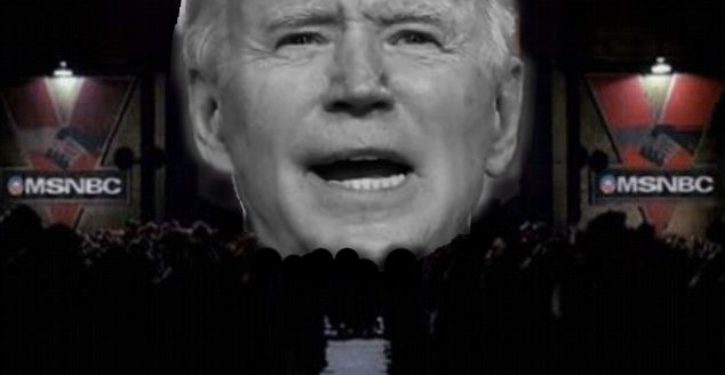
President Biden wants the federal government to borrow $1.9 trillion more to finance a massive “stimulus package,” which he hopes will spur economic growth. But economists say the move will actually shrink the economy in the long run by driving up federal debt-interest costs and crowding out private investment.
As economics writer Peter Suderman notes at Reason Magazine, Biden’s stimulus would eventually shrink America’s economy, although not this year: “Biden’s plan to go big would come with long-term macroeconomic costs. The Congressional Budget Office often notes that, all else being equal, larger debt burdens drag down economic growth. The PWBM analysis published this week attempted to put a price tag on the long-term cost of Biden’s $1.9 trillion plan: … ‘the additional public debt resulting from the Biden plan would decrease GDP by 0.2 percent in 2022′” and more in subsequent years.
As the progressive journalist Matthew Yglesias notes, there isn’t an economic justification for a $1.9 trillion stimulus if you take into account the recent creation of over 600,000 jobs, and accept the data about the “output gap” from the Congressional Budget Office (CBO).
Will this presidential election be the most important in American history?
“Stimulus” packages are justified according to a popular school of economics — the Keynesian school — when there is an “output gap” due to high unemployment. But Biden’s stimulus is much, much bigger than what could be justified based on the current “output gap” in our economy, and would have a much smaller “multiplier” effect on the economy. As the American Action Forum notes:
According to the CBO estimates, the output gap is a bit above $650 billion. According to the administration and Hill Democrats, a stimulus of $1.9 trillion – three times the size of the output gap – is needed to get the economy back to pre-pandemic shape. Those are some pretty unimpressive multipliers! Essentially, the case being made is that every $1 of spending in the proposal will kill off $0.67 cents of existing economic activity. That’s not stimulus; that’s economic slaughter.
President Biden has cited the recession as a reason to pass the stimulus package. But the recession that resulted from the coronavirus has already ended. The stimulus would massively increase our national debt, which already exceeds the size of our economy.
Even stimulus packages passed during recessions — when spending has more of short-run multiplier effect because the output gap is bigger — often backfire in the long run. President Obama’s 2009 stimulus package actually shrank the economy and increased unemployment in the long run, resulting in slower economic growth. As the director of the CBO explained, it had “a net negative effect on the growth of GDP over 10 years.”
As economist Chris Edwards notes, there are ways to fix any “output gap” without deficit spending or “stimulus” packages — such as using “deregulation” that fosters “entrepreneurial growth.” For example, after Republicans took control of Congress in 1946, government price controls that had shackled the economy were abolished. That led to an “economic boom.”
Biden’s stimulus package would shower hundreds of billions of dollars on state and local governments — such as California, whose governor has just “introduced a record-breaking $227 billion spending plan for the coming fiscal year.”
It would also include $1,400 checks for many Americans. Lawrence Summers, who served as Treasury Secretary under Bill Clinton, says such checks would not be a sensible way of stimulating the economy. Instead, the checks could lead to harmful inflation and overheating of certain sectors of the economy that are currently doing well. As he observes, “Family incomes are not down much from COVID-19, and there is a risk of overheating the economy.” The checks do not make sense from either a liberal or a conservative perspective.
Biden’s stimulus also seeks to raise the minimum wage to $15, although a minimum-wage hike probably cannot be passed as part of the “reconciliation process” being used to pass the rest of the stimulus package. Right now, minimum wages vary from state to state, from $7.25 to $14. States with lower living costs tend to have lower minimum wages to match.
As Edwards notes, “Biden’s wage directive would eliminate jobs for younger and less-skilled workers whose economic contribution is worth less than $15 per hour” and would wipe out many “business startups” needed to replace jobs “lost” due to the coronavirus. He notes that the Congressional Budget Office says a large number of jobs would be lost due to a minimum wage increase to $15.
Many low-living-cost counties in the United States — and Puerto Rico as a whole — have median wages below $15, yet most people there manage to raise families and own their own home. Forcing employers there to pay a $15 minimum wage would require them to pay what is currently an above-average wage to everyone, resulting in widespread bankruptcies and layoffs.




